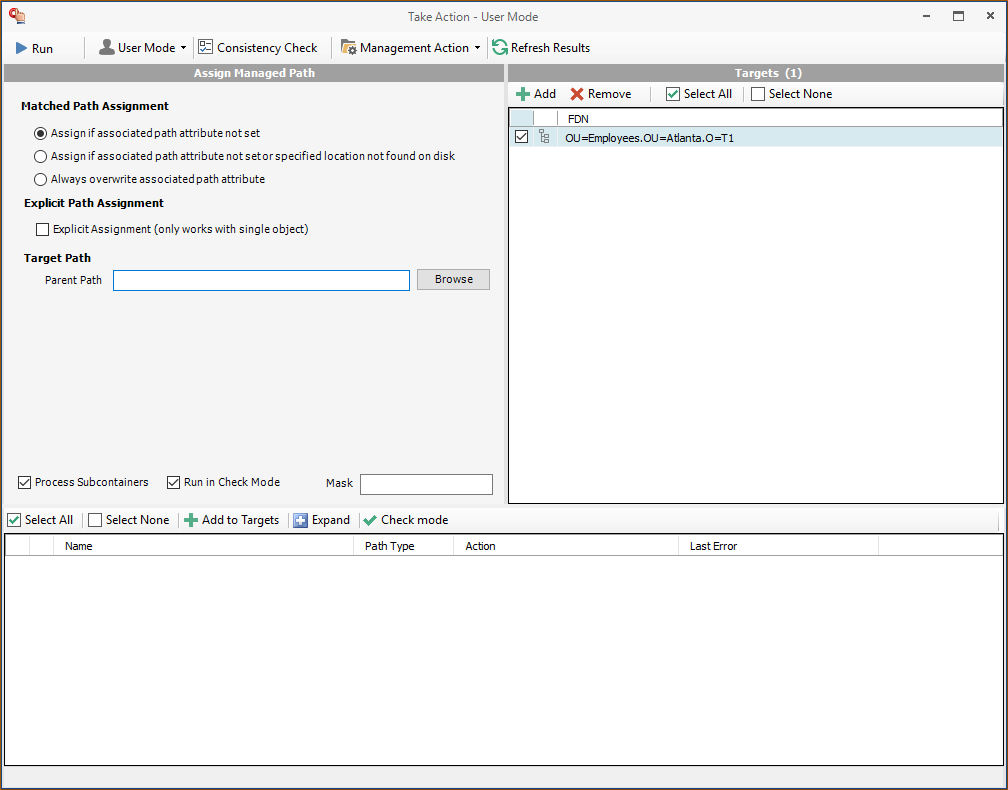4.4 Assigning Missing Home Folder Attributes
The consistency check report’s DS Path column indicates the path (also referred to as “attributes”) of the user’s assigned home folder. If no path is indicated, it is because the home folder attribute is not set in eDirectory.
Storage Manager for eDirectory allows you to populate any missing home folder attributes or correct attributes that are not configured correctly. You do this by selecting a path and looking for a match on each user’s ID. You also have the option to overwrite an existing attribute based on a match found.
If no home folder exists for the user, Storage Manager for eDirectory can create one automatically when the target path for the home folder is indicated in the policy. For more information, see Section 4.5, Standardizing User Home Folder Attributes.
-
In the Admin Client, click the Main tab.
-
Click Identity Objects.
-
In the left pane, browse through the tree so that an organizational unit with users that need home folder attributes appears in the right pane.
-
In the right pane, select the desired container.
-
Click User Actions > Assign Managed Path.

-
In the Matched Path Assignment portion of the window, make sure the Assign if Home Directory attribute not set option is selected.
-
Click Browse, use the Path Browser dialog box to browse to the path where your user home folders in the selected organizational unit reside, then click OK.
The selected path appears in the Parent Path field.
-
Verify that the Run in Check Mode check box is selected.
Check mode allows you to view the results of the action, without actually making changes.
-
Click Run.
-
Click Expand to expand the view.
Storage Manager for eDirectory summarizes any problems it can resolve in the Action column.
-
Click Collapse.
-
If you approve of the actions Storage Manager for eDirectory took in Check mode, deselect Run in Check Mode and click Run.
-
Run a new consistency check report by selecting the organizational unit you selected in Step 3, clicking Consistency Check, then clicking Run.
-
Observe that all users now have home directory attributes listed in the DS Path column.